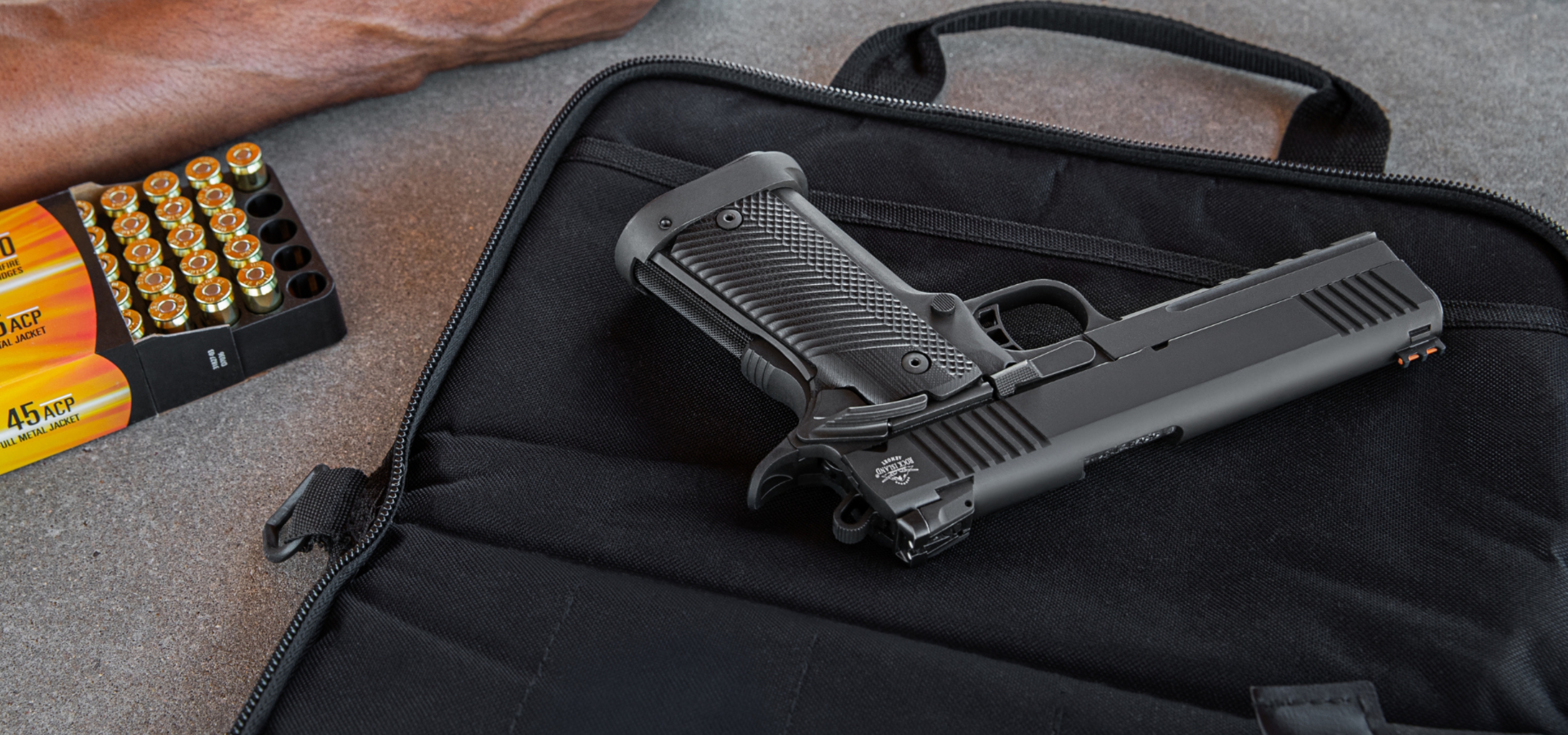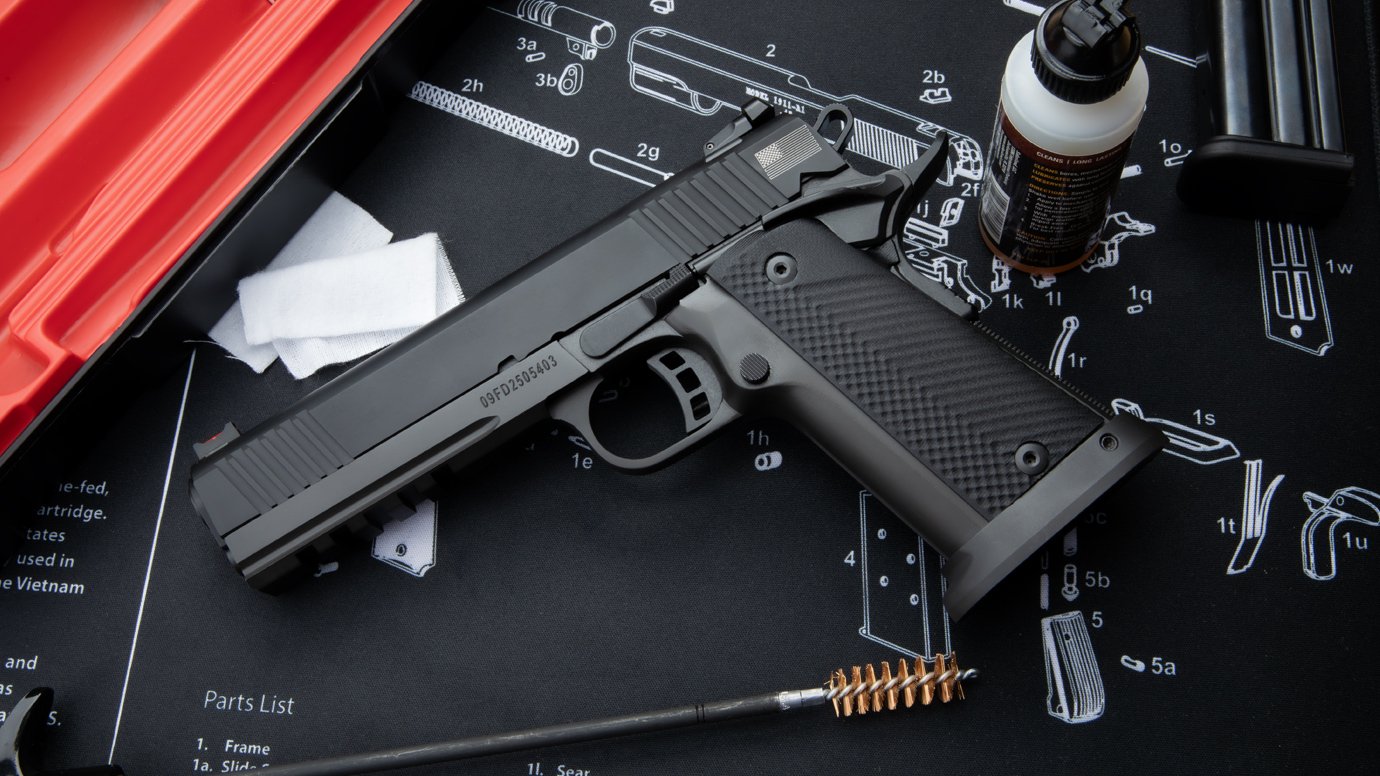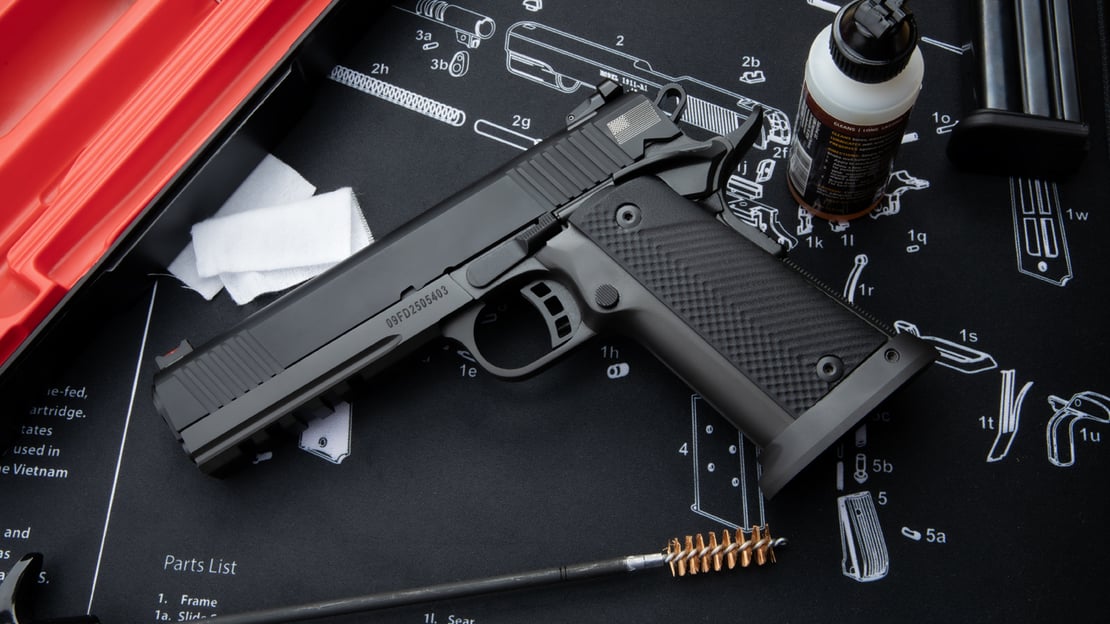Double-Stack Pistols: Increased Capacity and Enhanced Performance.
Posted by Team Armscor on Jul 31, 2023 4 Minute Read

When it comes to pistol magazines, they tend to come in one of two types: single stack or double stack. Throughout history, the single-stack firearm has been the most popular choice among concealed carriers. However, for those who crave a little extra capacity, double-stack magazines are "doubling" up in popularity. We’re breaking down the pros and cons of double-stack magazines and why you might benefit from some extra room.
Single Stack vs. Double Stack
On the surface, the differences aren’t obvious right away. The real difference is on the inside. Double-stack magazines fit more bullets into your gun, which leads to more firepower. Double-stack magazines, by design, are thicker than single-stack. That results in a bulkier grip on a pistol to accommodate the extra width, which can make them harder to conceal.
Unsure if you have one? Thankfully, it’s easy to tell. Simply take out one of the rounds for your gun and start loading your magazine. Watch the bullets stack; if they stay in a straight line, you have a single-stack mag. If they stagger, your pistol is a double-stack magazine.
A brief history of the double stack
Double stacks began development in 1921 when the French military requested a new semi-automatic 9mm pistol with an upgraded 15-round mag. Firearm Manufacturer Fabrique Nationale was up to the task. He and his chief weapons designer John Browning – and Browning’s assistant Joseph Saive, first implemented the design onto a modified FN Model 1903 for testing. They were granted a patent for the design on February 22, 2917, four months after Browning passed.
Browning’s son Val later picked up his father’s designs and turned it into a staple of the pistol market, thanks to guns like the Glock 19 and 26, the Smith & Wesson M&P and the FNS 9c.
Pros and cons of single stack and double stack mags
As far as which firearm to choose, that boils down to personal preference. It’s unlikely in most self-defense situations that you’ll need an extra 6 to 10 rounds. If you feel like you’d be safer with extra ammo, however, that’s entirely up to you. There are pros and cons to both mags:
Single Stack
Pros:
- Popular concealed carry choice for years.
- Lightweight and easier to conceal.
- Ideal for smaller men and women.
- Easier for people with smaller hands to manipulate.
Cons:
- Smaller capacity – typically no more than 7 or 8 rounds.
Double Stack
Pros:
- High capacity, capable of holding double-digit rounds.
- Larger individuals or those wearing layers can conceal just as easy as a single stack.
- Becoming more common amongst shooters.
Cons:
- Bigger size can make concealment a challenge for smaller individuals.
- The added weight and thickness can be less comfortable for carrying all day.
- Handling can be tough for those with small hands.
The Choice is in Your Hands

When it comes time to decide if you’d like more room in your magazine, that’s entirely up to you and your shooting style. You might not agree with some of the pros and cons listed above. In fact, maybe a con doubles as a pro for you. While single-stack magazines have a longer history of being the preferred choice, today, double-stack magazines are quickly rising in popularity. If you’re looking for some additional firepower, and don’t mind a little extra weight, you might have room for a double-stack magazine in your life.







